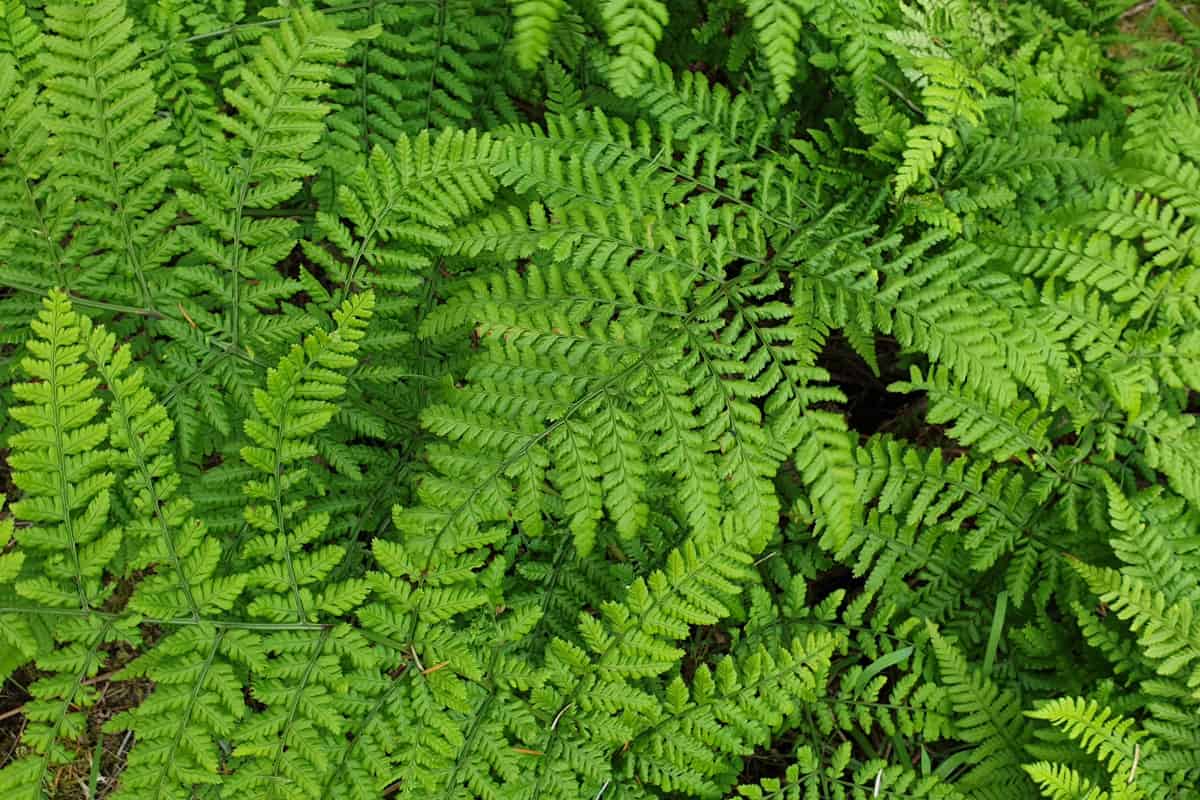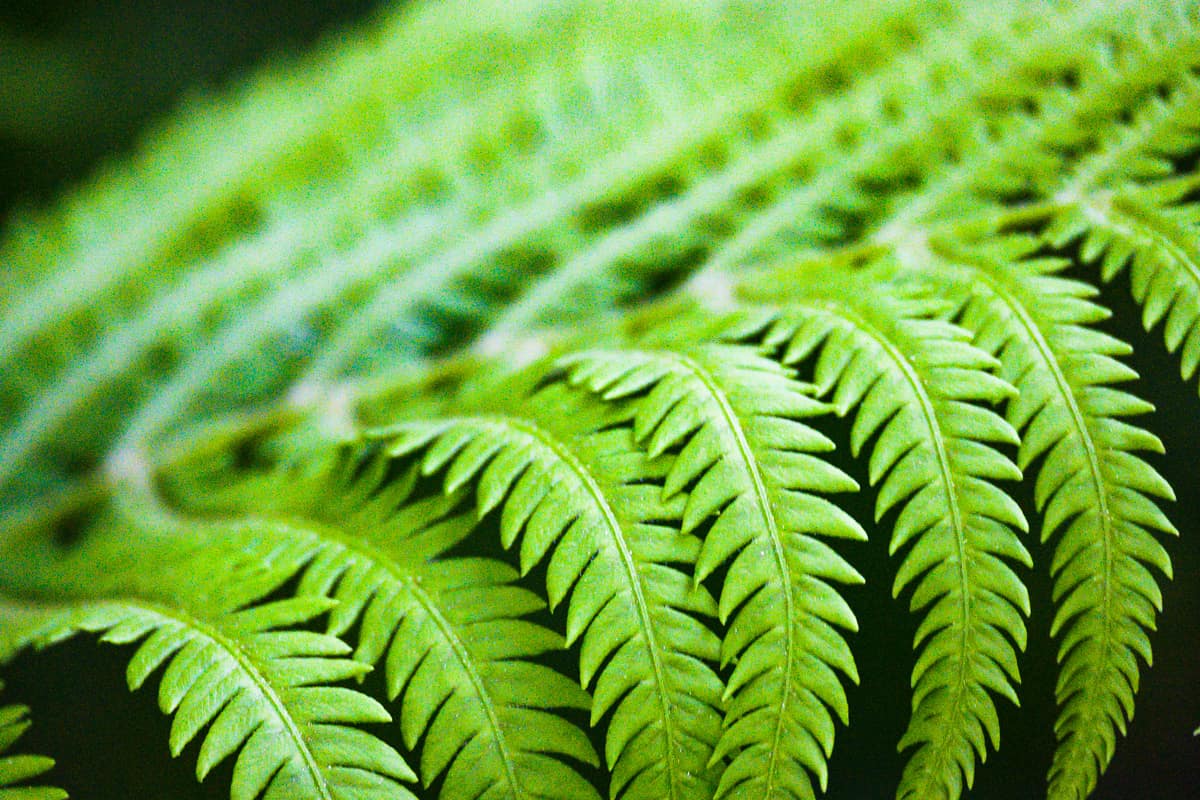Preparing your garden for the winter season can sometimes feel endless. Do you have a Kimberly Queen fern in your yard that needs to be overwintered, but you have no idea where to begin? How do you get a Kimberly Queen fern ready for colder weather?
We will cover these questions and many more throughout this article. Let's dive in!
One of the first things you want to do when overwintering a Kimberly Queen fern is to check the upcoming weather. If the temperatures drop below 55 degrees Fahrenheit, you need to move your fern indoors.
Generally, it's best to treat this fern species as an annual. So, unless you're in USDA zones 9-11, you don't want to expect your fern to come back after a cold winter.
As we start, we will cover everything Kimberly Queen ferns and discuss how to get one ready for winter. Whether you're new to this plant or recently moved somewhere chilly, we're here to assist. With that said, let's dive right into this topic below!

Can A Kimberly Queen Fern Tolerate Cold Weather?
No. Generally, a Kimberly Queen fern will not survive in weather below 55-60 degrees for extended periods. Considering this plant thrives in moderate, warm climates, you don't want to let one sit in the snow or cold.

Additionally, many experts recommend bringing Kimberly Queen ferns inside during colder seasons. Doing this can save your plant from freezing and ultimately dying outside.
Moreover, you can usually keep Kimberly Queen ferns outdoors in zones 9-11, although too many cold spells can cause issues.

So, we recommend bringing your fern inside if the weather calls for cooler temperatures, regardless of where you live. The last thing you want is to accidentally kill your fern, thinking a few freezing nights won't damage its root system.
How Do You Overwinter Kimberly Queen Ferns?
Now that you know their cold tolerance (or lack thereof), it's essential to overwinter your plant correctly. Most importantly, if you live in a cold climate, you want to relocate your fern indoors until the spring.
On the other hand, if you're in a warmer climate, you can usually keep your fern where it is. Some gardeners choose to take their Kimberly Queen ferns inside regardless, so this is a common practice.
Furthermore, you might want to clean up your fern in the fall with light pruning. Whether inside or outdoors, Kimberly Queens responds well to frequent trimming and will grow larger over time.
For those moving their fern indoors, you might want to plug in a humidifier nearby.
Considering your fern loves humidity and moisture in its soil, moving one into a super dry home can also create an issue throughout the winter.
Of course, you don't have to get crazy with the humidity, but a little goes a long way.
MOVTIP Small Plant Humidifier
This humidifier is portable, works well for indoor plants, has an auto shut-off feature, adjustable spray settings, holds 800 milliliters, is easy to clean, and works 8-12 hours on a full tank.
Check out this mini humidifier on Amazon.
What Temperature Is Too Cold For A Kimberly Queen Fern?
As we mentioned, Kimberly Queen ferns do not tolerate the cold well. Therefore, temperatures below 55 degrees Fahrenheit can cause significant issues for your plant.
If the weather calls for freezing climates or temperatures below 60 degrees, it's best to bring your fern inside until it warms up.
You want to be mindful of this, as too many freezes can permanently damage/kill your fern. With that said, Kimberly Queen ferns do prefer mild, cooler weather.
Ideally, your fern will see 60-70 degree days throughout the year, regardless of the season. So, somewhere semi-tropical could be the best place to keep one outside 24/7.
The main thing to avoid with these plants is frost. When a Kimberly Queen fern becomes so cold, there is frost on it; this is when it will go into shock.
If you don't warm your plant up quickly, this will eventually be the demise of your fern.
What Happens If It Snows On My Kimberly Queen Fern?
A few things might happen if your fern is outside during a snowstorm. As we covered above, Kimberly Queen ferns dislike the cold, especially frost.
So, if your fern is in the snow for long periods, its roots will likely freeze. Not only can this stun your fern for weeks on end, but it can also even kill it.
The best thing to do in this situation is to bring your Kimberly Queen fern indoors, place it near a warm window, and allow it to reacclimate to the indoor temperatures.
Of course, there's always a chance your fern won't survive, so we recommend bringing it inside during wintertime if there's a possibility of snow.
On the other hand, your fern may bounce back and be okay within a few weeks, so this can go either way.
How Much Sun Does A Kimberly Queen Fern Need?

In general, Kimberly Queen ferns do best in partial shade. Considering this species prefers shade and cooler weather, you don't need to keep one in the full sun.
One thing your fern will need is humidity. Regardless of where you have it, your fern needs moisture in the air and its soil. Without this, expect a lackluster fern.
According to experts, giving a Kimberly Queen fern roughly 4-6 hours of bright, indirect sunlight each day is ideal.
Again, that doesn't mean full, direct sun but reflective light or partial shade. Ferns typically don't love high heat, so that can be just as damaging to one as the cold.
Remember, temperatures between 60 and 70 degrees are best.
On the other hand, if your fern is inside, you should keep it near a bright, warm window so it doesn't become malnourished or leggy.
Can I Grow A Kimberly Queen Fern In Full Shade?
It is possible to grow a Kimberly Queen fern in full shade. However, you don't want to allow your fern to get no natural light, as this can become a problem.
Like any living plant, your fern requires a few hours of sun exposure to survive and grow. Without the nutrients from the sun, your plant can become leggy and unattractive.
Furthermore, if you live somewhere colder, not having any sun can kill a Kimberly Queen fern.
In contrast, full to partial shade can be a lifesaver if you are somewhere hot. So, this will greatly depend on the overall climate of your garden or house.
Do Kimberly Queen Ferns Come Back Every Year?
Yes! A Kimberly Queen fern should come back yearly if it's in the correct growing zone. As we mentioned before, this fern variety thrives in USDA zones 9-11.
On top of that, your fern may return each year if you move it inside during colder times. The key to a long-term Kimberly Queen fern is giving it stability.
Weather-wise, your fern will appreciate cooler temperatures as long as they're above 60 degrees. Also, Kimberly Queens don't need much heat either, so climates above 70-75 degrees aren't always great.
According to Kentucky Living, these ferns also require constant moisture to come back each year. So, if you regularly let your fern's ground become dry, it might not survive the winter.
Should I Cut Back My Kimberly Queen Fern?
Another easy way to ensure your Kimberly Queen fern remains healthy is to trim it regularly. Usually, giving your fern a light pruning each time you notice leggy sections will encourage new growth.
Moreover, ferns respond well to pruning, as this triggers them to produce new foliage. Even if it's about to be winter, you can still trim your Kimberly Queen if need be.
Especially for anyone moving their fern inside, trimming off any dead sections can be very beneficial. Not only is this an easy way to keep your plant healthy, but it will also keep it aesthetically pleasing.
How Fast Does A Kimberly Queen Fern Grow?

Depending on their location, Kimberly Queen ferns can grow at a moderate speed. However, you won't typically see this species grow more than a few inches per year.
It's also worth noting that these ferns have a mature height of nearly 1-2 feet and a width of 3-4.
So, they're not going to become huge anyways. With that said, if your fern is outside year-round in zones 9-11, it will likely grow faster than one inside.
Furthermore, the amount of light your fern receives will also affect its growth rate. For example, a Kimberly Queen fern in full shade won't produce as much greenery as one in partial sun.
Even indirect light can contribute to a healthier plant, so however you can achieve this, we recommend allowing your fern to see the sun each day.
How Long Do Kimberly Queen Ferns Live?

Although this varies, you can expect a Kimberly Queen fern to live for five or more years in ideal conditions. Of course, your location and upkeep will impact the lifespan of your fern.
In addition, it's also essential to keep your fern's soil moist, which can keep it alive for years to come. Every plant is different, so seeing your Kimberly Queen last a while or only a few years is possible.
To Wrap Things Up

Whether you have Kimberly Queen ferns in your garden or wish to plant some, it's always good to know their cold tolerance. We found that these ferns don't respond well to freezing weather.
So, if the forecast calls for temperatures below 55-60 degrees Fahrenheit, you want to move your fern indoors during the winter. Again, your fern won't always die in the cold, but it can become stunted.
Made it to the end? Check out these helpful related plant posts below!
Why Is My Tree Fern Dying [And What To Do]?
How To Properly Overwinter Ferns [Inc. Potted]
Do Ferns Need Drainage? [And How Much Should You Water Them]


I have a beautiful Kimberly Queen Fern. I brought it in before it got cold and it is doing well, so far. It is facing north inside,as it was outside, all summer. It does not get any direct sun inside. I water it twice a week and so far it looks good. It is in our family room and we have a fireplace, so I’m concerned about the humidity and wondering if it would really help if I got a humidifier.It will have to stay inside for several months and I’d like to keep
it alive. Also since it was only moved from outside our sliding door into the same location inside. Is it o.k. to leave a lamp on all night for extra light? What would you recommend? We live near Columbus,Ohio so we get crazy weather and it is very cold now.
Sincerely,
Becky Baker